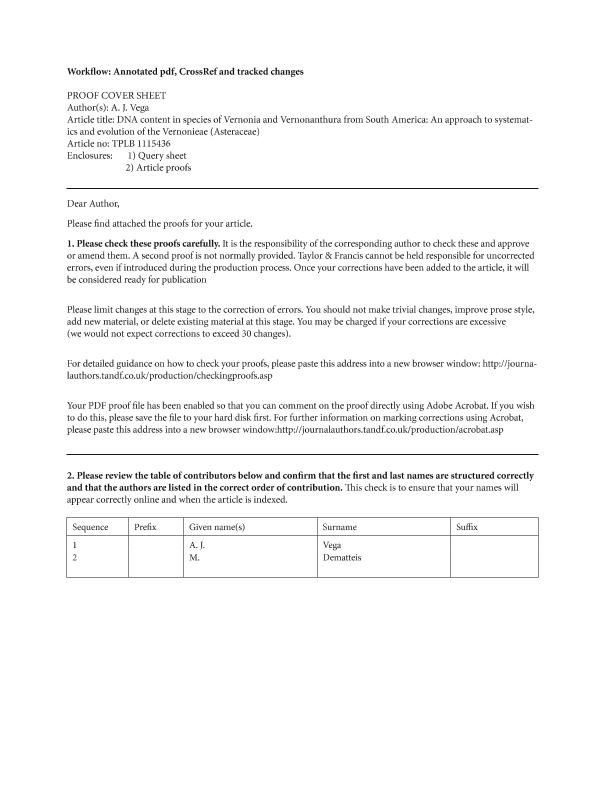Artículo
DNA content in species of Vernonia and Vernonanthura from South America: An approach to systematics and evolution of the Vernonieae (Asteraceae)
Fecha de publicación:
12/2015
Editorial:
Taylor & Francis
Revista:
Plant Biosystems
ISSN:
1126-3504
e-ISSN:
1724-5575
Idioma:
Inglés
Tipo de recurso:
Artículo publicado
Clasificación temática:
Resumen
There are relatively few studies of DNA content in the Vernonieae (Asteraceae) tribe. The first studies were realized in the Lessingianthus genus and determined the DNA content of 25 species. After DNA content, ploidy level and the total karyotype were compared in 6 Chrysolaena species. The aim of this study was to present, for the first time, the DNA content values of Vernonanthura and Vernonia and to thereby expand knowledge of the Vernonieae tribe. A total of 19 natural populations belonging to the genera Vernonanthura and Vernonia were studied for the first time. The results were compared with other Vernonieae genera and with other Asteraceae tribes. Our results found that Vernonieae have the smallest range of 1C value variation in Asteraceae. Furthermore, there were differences in the DNA content of Vernonia and Vernonanthura. These results show that low DNA content and herbaceous habit in Vernonia are characters derived from the higher DNA content and woody habit present in Vernonanthura. These results could indicate a hybrid origin of one species and allow the determination of both the ploidy and chromosome number of other taxa. The results observed in Vernonanthura species showed a highly significant correlation between 1C-value and latitude.
Palabras clave:
Asteraceae
,
Evolution Trends
,
Genome Size
,
Hibrid Origin
,
Systematic
,
Vernonieae
Archivos asociados
Licencia
Identificadores
Colecciones
Articulos(IBONE)
Articulos de INST.DE BOTANICA DEL NORDESTE (I)
Articulos de INST.DE BOTANICA DEL NORDESTE (I)
Citación
Vega, Alvaro Jose; Dematteis, Massimiliano; DNA content in species of Vernonia and Vernonanthura from South America: An approach to systematics and evolution of the Vernonieae (Asteraceae); Taylor & Francis; Plant Biosystems; 12-2015; 1-6
Compartir
Altmétricas




